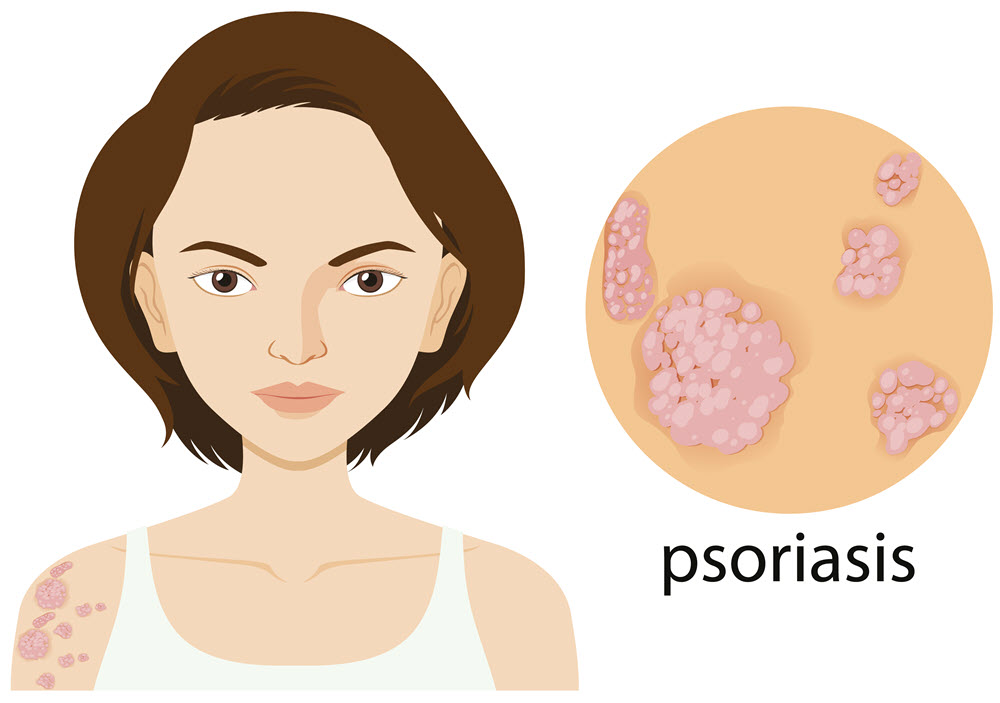Skin & Esthetics
Psoriasis: Things you need to know
By S.I. (staff writer) , published on July 25, 2021

Medicine Telehealth Health skin itching
What is Psoriasis?
Psoriasis is an autoimmune disorder causing a rapid buildup of the skin leading to scaling. Psoriatic scales are generally whitish-silver in appearance, surrounded by reddened skin. They develop in thick, red patches, with inflamed skin around the margins. Sometimes, these patches crack and start bleeding. The rapid build of skin cells leads to this chronic skin disorder [1].
Skin cells grow under the surface and eventually come out. This whole process usually takes one month. However, in psoriasis, the process speeds up, taking only a few days to get completed. This process results in a rapid buildup of skin cells that leads to scaling. The typical sites affected are hands, feet, scalp, neck, and face.
What Causes Psoriasis?
It is a chronic autoimmune disorder with no apparent reason known thus far. However, as per researches, two factors might contribute to developing psoriasis, described below [2]:
- Genetics: some diseases run in families from generation to generation; psoriasis is one of them. People inherit the disease from their parents. If one of your close relatives, siblings, or parents suffers from this skin condition, you are more likely to suffer from it.
- Immune system: our immune system is responsible for guarding off certain disease-causing agents. In psoriasis, the body’s immune system attacks itself, justifying the word ‘autoimmune disease.’ In this disease, the white blood cells (WBCs) attack your own skin cells, mistakenly, leading to a rapid buildup of skin cells.
What are the Symptoms of Psoriasis?
Signs and symptoms of psoriasis vary in different individuals, depending upon various factors. Also, different types of psoriasis manifest themselves with distinct symptoms. Here is a list of some common symptoms [3]:
- Red and inflamed skin patches
- Cracked and bleeding skin
- Whitish-silver scaly skin
- Plague patches
- Painful and inflamed joints
- Soreness around patches
- Thick nails
- Itching around the skin patches
- Burning sensation on the affected area
What are its Types?
Psoriasis is divided into five different types that are listed below [4]:
- Plague psoriasis
- Pustular psoriasis
- Guttate psoriasis
- Erythrodermic psoriasis
- Inverse psoriasis
What are the Treatment Options for Psoriasis?
Unfortunately, psoriasis is not treatable. You can only control the symptoms and slow down the growth of skin cells. Treatment reduces inflammation and removes scales. Three treatment options are available for psoriasis, described below [5]:
- Medications: people who do not respond to topical treatment are prescribed medication. However, these drugs have several associated side effects. Moderate to severe psoriasis is treated with these medicines:
- Methotrexate
- Cyclosporine
- Retinoids
- Topical treatment: this type of treatment is reserved for mild to moderate psoriasis only. These ointments are applied to the skin for reducing scaling. Following are the topical treatment options:
- Topical corticosteroids
- Topical retinoids
- Moisturizer
- Anthralin
- Salicylic acid
- Light therapy: ultraviolet (UV) light or sunlight is made to fall on the skin, killing overreactive White blood cells. This treats moderate to severe psoriasis.
References:
- https://www.ncbi.nlm.nih.gov/books/NBK448194/
- https://www.ncbi.nlm.nih.gov/pmc/articles/PMC6471628/
- https://www.ncbi.nlm.nih.gov/pmc/articles/PMC6471628/#:~:text=1.2.-,Psoriasis%20Vulgaris,cover%20large%20areas%20of%20skin.
- https://www.ncbi.nlm.nih.gov/pmc/articles/PMC5175084/
- https://www.ncbi.nlm.nih.gov/pmc/articles/PMC5389757/
Find articles related to: Medicine Telehealth Health skin itching
More articles about Skin & Esthetics
Back to the Health Tips Index




